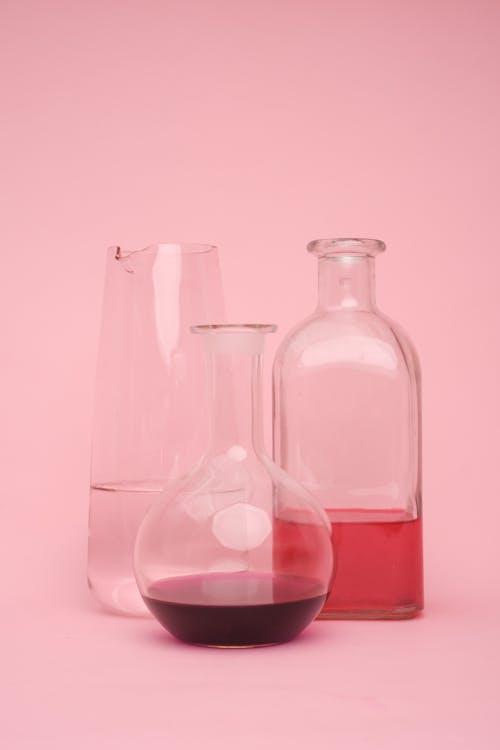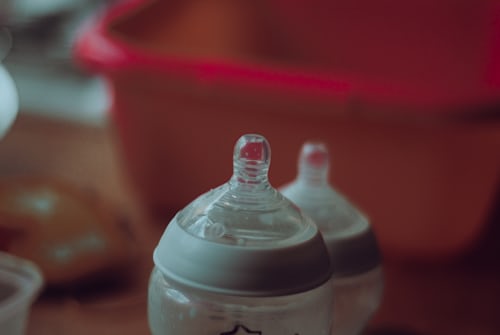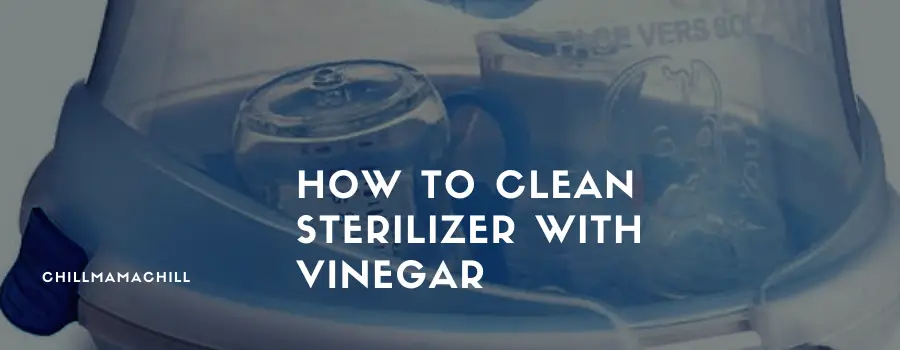Harsh cleaning chemical products are not recommended for anything that comes in contact with your baby. Sterilizers ensure that your baby’s bottles, pacifiers, and other feeding implements are impeccable, free of germs or mold. It’s essential, therefore, that you know how to clean sterilizer with vinegar, a natural sanitizer that’s safe for tots.
Vinegar comes from acetic acid, meaning it’s not only useful for cooking but also for cleaning and disinfecting. It’s the acidic part that gives this organic compound its pungent smell and sour taste. As a part of many household cleaners, it dissolves mineral deposits, grease, and dirt found that form in commercial sterilizers.
For such a multipurpose cleaner, vinegar is not only effective but conveniently and affordably available. You can clean any type of baby bottle sterilizer without staining, and some types of this solution won’t leave that vinegary smell. Keep reading to learn how to disinfect your steam-electric sterilizers with an eco-friendly, non-toxic sanitizer.
Can I Sterilize My Baby’s Bottles Using Vinegar?
Vinegar is a great choice for cleaning anything baby-related. It contains about 5% acetic acid, powerful enough to dissolve grime, dirt and kill germs. Microbes that cause food-borne diseases such as salmonella, Escherichia coli, and listeria monocytogenes stand no chance against this organic, non-toxic compound.
In 2010, a study found that mixing a solution with ten parts vinegar was enough to obliterate the influenza ‘A’ virus. However, the Environmental Protection Agency, EPA hasn’t registered vinegar as a disinfectant. For that to happen, a substance needs to kill at least 99.9% of all disease-causing pathogens.
Vinegar as a compound has limitations in obliterating harmful microbes, including SARS-CoV-2, which causes Covid 19. The different types of vinegar include;
- White distilled vinegar
- Apple cider vinegar
- White or red wine vinegar
- Balsamic vinegar
White distilled vinegar comes out tops as the best choice for cleaning a sterilizer due to its lack of coloring agents. Its acidity levels, at five percent, equal those of many multipurpose everyday cleaners. In case the odor is overwhelming, you can use apple cider vinegar instead, made from the fermented juice of apples.
How Do You Clean Sterilizer with Vinegar?
Electric steam sterilizers are used to kill bacterial and other microbes on your baby’s bottles. These sterile cleaning devices also require regular cleaning. Moisture that remains in these units after use promotes microorganism growth, including black mold. Mineral deposits also build upon the hotplate, and you must de-scale these if your sterilizer is to work efficiently.
To clean your baby’s sterilizer with vinegar, take out all removable parts and clean with regular baby-safe dish soap. The basket holder for baby bottles should disconnect from the reservoir, and you must wash and rinse these well using a dishwashing detergent. Check the exterior of the machine for cleanliness, especially around sensors and switches, cleaning these before sterilizing with vinegar.

Measure out 2.7 liquid ounces of white distilled vinegar in 0.7 oz water and pour it into the reservoir. Leave this solution inside the sterilizer and soak in the removable parts for about 30 minutes. Use a ration of 1:1 vinegar and water in a spray bottle for the exterior base unit, making sure it’s not plugged in before spraying.
On emptying the vinegar solution, wipe the sterilizer base and cover with a damp cloth. Pour out any mixture from the base before rinsing with warm water, doing the same for the removable parts.
How Can I Descale a Sterilizer Using Vinegar
It’s advisable to use distilled water in your sterilizer as other types such as mineral, tap, or filtered increase the chances of deposits on your heating element. That results in inefficiency and a shorter product life if not regularly de-scaled. Under normal circumstances, you should descale your bottle sterilizers every four to six weeks, but more frequently if you’re using hard water.
Use two ounces of water with one for white vinegar when descaling, pouring it directly over the hot plate. Fill the solution up to the fill line and run the unit for at least two minutes or until your mixture evaporates. Depending on the extent of the limescale, you can leave the solution to stand for between 30 minutes and 24 hours.
If the scales come off, pour out the vinegary water mix and wipe the element clean with a dry cloth. Unplug and rinse the rest of the reservoir before reassembling the unit. You can also turn the unit on and use the required amount of water, running a regular cycle to diffuse the smell of vinegar before using it to sterilize the baby’s bottles.
Using Vinegar to Remove Funky Smells from Sterilizer and Baby Bottles
You can use vinegar in the place of the manufacturer-recommended citric acid or a specially formulated descaling solution for your baby bottles sterilizer. Dilute these in water according to their instructions, making sure to rinse twice or wipe the base unit dry before running a dummy cycle. If your unit smells like sour milk from the bottle and other feeding appliance cleanings, vinegar will act as a natural deodorizer.

Acetic acid cuts fats in milk and formula, and you can use a 50:50 mix with water to create a soak for the removable parts of your sterilizer. Pour some of the solutions inside the base unit while it’s unplugged and let it sit for at least six hours, preferably overnight. You can also restore the unit to its original smell when your bottles come out smelling like burnt plastic, soap, or mustiness.
Whenever you’re cleaning your sterilizer with vinegar, avoid washing your unit with castile soap, or disinfecting with hydrogen peroxide. These react with the compound to either produce noxious fumes or neutralize its fats breaking power. If the grime is tough, use more acidic vinegar concerning water, white distilled being the best choice.
For your sterilizer’s basket, lid, or other removable parts, a little vinegar in your dishwasher cleans and sanitizes to a degree. You can also wash the inside of the base unit with dishwashing soap and warm water before you add your vinegar cleaning or descaling solution.
Conclusion
Now that you’ve learned how to clean sterilizer with vinegar, you’ll find that there are many more uses for this non-toxic, eco-friendly, and organic compound. You can get rid of that cloudy film that forms on your baby’s bottles after sterilizing or dishwashing with a vinegary solution. As a mild disinfectant, acetic acid in the vinegar will protect your child from disease-causing pathogens commonly found in your home.

I’m Cathrine and I’m a 39-year-old mother of 3 from Utica, New York. And I’m extremely happy you’ve come to visit my hide-out on the web. Here I post about everything related to family-life and usually it will involve babies and lessons I’ve learned over the years from experts, friends, and my own mistakes. So hopefully you will find what i write fun and informational!


